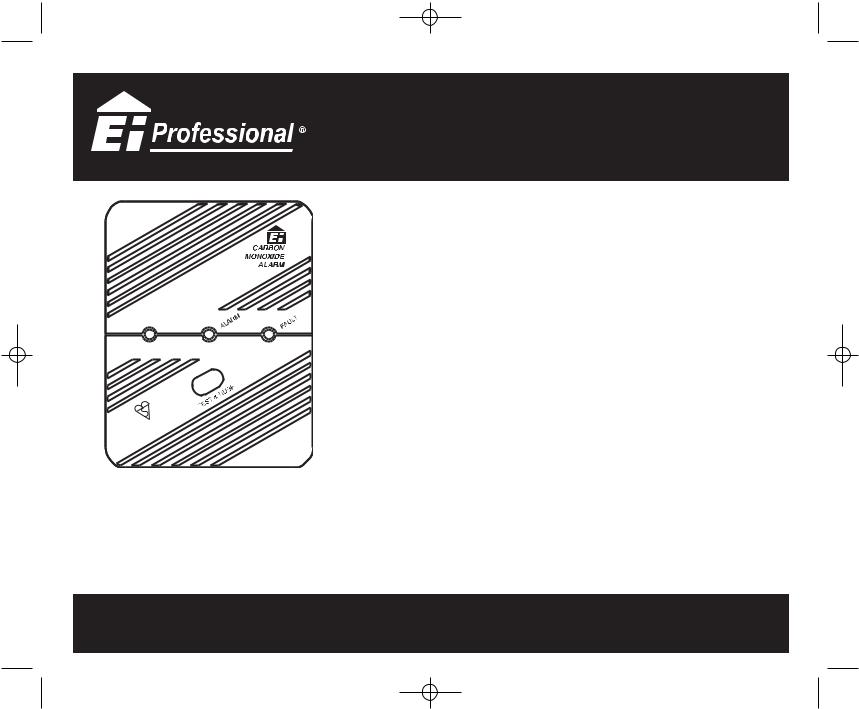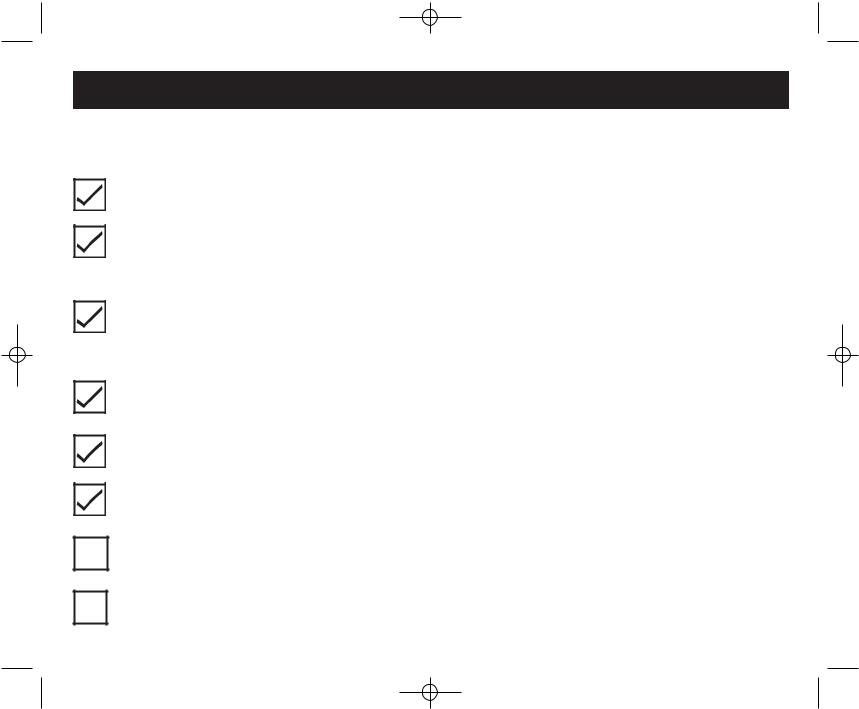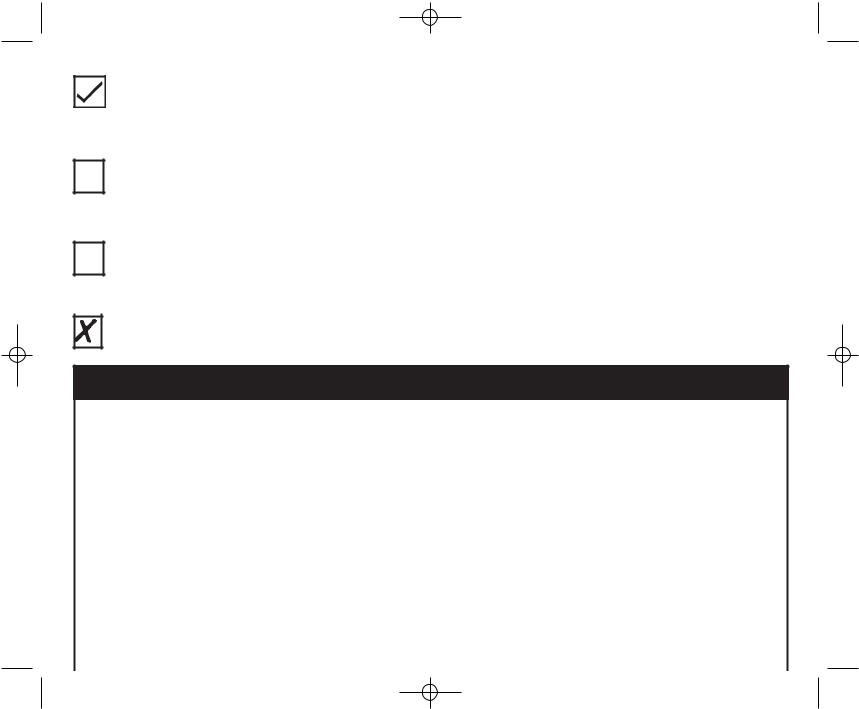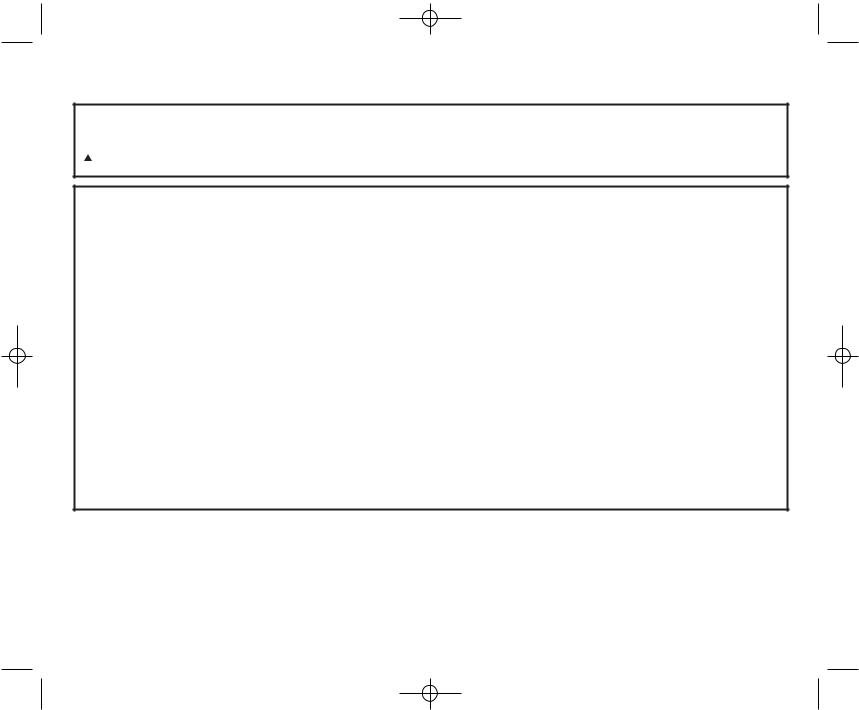Ei Electronics Ei220EN User Manual

B15584-R0-225EN&220EN-U&C 6/9/07 8:13 AM Page 1
MAINS POWERED
CARBON MONOXIDE ALARM
|
|
S |
D |
|
M |
IN |
|
E |
|
|
|
ER |
||
A |
W |
|
||
|
O |
|
|
|
P |
|
|
|
|
|
|
50291: |
2001 |
|
EN |
|
|
BS |
|
|
|
|
|
|
Model Ei 225EN
Model Ei 220EN
-HARD WIRED TO MAINS
-WITH POWER CORD
Read and retain carefully for as long as the product is being used. It contains vital information on the operation and installation. The leaflet should be regarded as part of the product.
If you are just installing the unit, the leaflet must be given to the householder. The leaflet is to be given to any subsequent user.
INSTRUCTIONS

B15584-R0-225EN&220EN-U&C 6/9/07 8:13 AM Page 2
|
CONTENTS |
Page |
|
|
|
1 |
READ THIS FIRST |
3 |
2 |
WHAT TO DO WHEN THE CO ALARM SOUNDS |
4 |
3 |
CARBON MONOXIDE - THE SILENT KILLER! |
5 |
4 |
WHERE TO PLACE CARBON MONOXIDE ALARMS |
11 |
5 |
INSTALLING YOUR CARBON MONOXIDE ALARMS |
15 |
6 |
TESTING YOUR CARBON MONOXIDE ALARMS |
19 |
7 |
MAINTAINING CARBON MONOXIDE ALARMS |
20 |
8 |
LIMITATIONS OF CARBON MONOXIDE ALARMS |
22 |
9 |
HOW TO PROTECT YOUR FAMILY |
24 |
10 |
TECHNICAL SPECIFICATIONS |
26 |
11 |
GETTING YOUR CARBON MONOXIDE ALARMS SERVICED |
28 |
12 |
GUARANTEE |
28 |
13 |
TROUBLESHOOTING |
30 |
2

B15584-R0-225EN&220EN-U&C 6/9/07 8:13 AM Page 3
1. READ THIS FIRST
WARNING: The Ei225EN Alarm should be permanently wired to the mains by a qualified electrician in accordance with IEE wiring regulations (BS7671).
The Ei220EN is just plugged in to the mains.
Install the Carbon Monoxide Alarm (CO Alarm) in every room that contains a fuel burning appliance, particularly rooms where people spend a lot of time e.g. bedrooms, kitchens and sitting rooms.
In rooms with an appliance install (preferably) on the ceiling, (300mm from walls), and between 1m to 3m horizontally from appliance. In rooms remote from the appliance install at breath level, where the light indicators can be seen.
Regularly check that the green power light is on. Important: The CO Alarm will not work if the mains supply is off.
Test the unit weekly by pressing the test/hush button-the horn will sound.
Open the unit by sliding the cover up as shown in figure 1. Then remove the terminal block screw. (Ei225EN only).
Immediately the unit is powered the green light will turn on & the red & amber
?lights will flash once to show they are operational.
?Replace unit after up to 6 years operation (see ‘Replace by’ date on sidewall label).
3

B15584-R0-225EN&220EN-U&C 6/9/07 8:13 AM Page 4
When the CO Alarm detects abnormal levels of CO (above 50ppm CO) the red light starts to flash and the horn will sound within 90 minutes. At higher levels of CO the alarm will turn on sooner (see table B - page 9).
The CO Alarm will automatically reset once the CO has cleared. Pressing the
?test/hush button resets the CO Alarm immediately (below 300ppm CO). If CO is still present the red light and horn will turn on again after about 4 minutes.
?The CO Alarm is no substitute for keeping chimneys and flues clear and in good condition, and all of your appliances serviced regularly according to the manufacturers’ instructions.
Do not fit alarm until all building work is completed to avoid contamination.
2.WHAT TO DO WHEN THE ALARM SOUNDS
(1)Open the doors and windows to ventilate the area.
(2)Turn off all fuel appliances where possible and stop using them. (The alarm can be silenced immediately by pushing the test/hush button).
(3)Evacuate the property leaving the doors and windows open.
(4)Get medical help immediately for anyone suffering the effects of Carbon Monoxide poisoning (headache, nausea), and advise that Carbon Monoxide poisoning is suspected.
4

B15584-R0-225EN&220EN-U&C 6/9/07 8:13 AM Page 5
(5)Ring your gas or other fuel supplier on their emergency number. Keep the number in a prominent place.
(6)Do not re-enter the property until the alarm has stopped. (If the alarm has been silenced by pressing the test/hush button, wait at least 5 minutes so the alarm can check that the CO has cleared).
(7)Do not use the fuel appliances again until they have been checked by an expert. In the case of gas appliances this must be a CORGI registered installer.
Figure 1 - Alarm Installation
3. CARBON MONOXIDE
- THE SILENT KILLER!
2.1 What is Carbon Monoxide ?
Congratulations on becoming the owner of an Ei Carbon Monoxide Alarm. This will help protect you and your household from the dangerous effects of Carbon Monoxide - the silent killer. (CO is the chemical symbol, indicating the molecule has one carbon atom and one oxygen atom).
Many are killed each year, and many more suffer ill health from Carbon Monoxide
TERMINAL BLOCK COVER SCREW (Ei225EN only)
MOUNTING HOLES
PRESS HERE FIRST AND SLIDE UP
GAS
ENTRY
HOLES
5

B15584-R0-225EN&220EN-U&C 6/9/07 8:13 AM Page 6
(CO) poisoning. CO is an invisible, odourless, tasteless and extremely toxic gas. It is produced by appliances and vehicles burning fuels, such as coal, oil, natural/bottled gas, paraffin, wood, petrol, diesel, charcoal etc. CO is absorbed by red blood cells in the lungs in preference to oxygen - this results in rapid damage to the heart and brain from oxygen starvation.
High levels of CO in a house can be caused by:
•Incorrectly or poorly installed fuel-burning appliances.
•Blocked or cracked chimneys/flues.
•Blocked vents or draught-proofing which makes areas with fuel burning appliances or fireplaces airtight.
•Engines of cars, lawnmowers etc. left running in confined spaces.
•Portable paraffin or gas heaters in badly ventilated rooms.
2.2 Symptoms of Carbon Monoxide Poisoning
Most people know that high levels of CO are harmful, however the period of exposure is also important.
The following symptoms are related to Carbon Monoxide poisoning and should be discussed with all members of the household.
6

B15584-R0-225EN&220EN-U&C 6/9/07 8:13 AM Page 7
Mild Exposure: Slight headache, nausea, vomiting, fatigue (often described as “flu-like” symptoms).
Medium Exposure: Severe throbbing headache, drowsiness, confusion, fast heart rate.
Extreme Exposure: Unconsciousness, convulsions, cardiorespiratory failure, death. A high level of CO for a short period (e.g. 350 ppm CO for 30 minutes) will cause the same symptoms, a slight headache, as a lower level for a longer time (e.g. 150 ppm for 90 minutes). Table A shows how exposure to different concentrations of CO generally affects people.
Many cases of reported Carbon Monoxide poisoning indicate that while victims are aware they are not well, they become so disorientated they are unable to save themselves by either leaving the building or calling for assistance. Young children and household pets may be the first affected.
7

B15584-R0-225EN&220EN-U&C 6/9/07 8:13 AM Page 8
Table A: Effects of Carbon Monoxide Poisoning
Concentration |
|
of CO in Air |
Inhalation Time (approx) and Symptoms Developed |
ppm |
|
35The maximum allowable concentration for continuous exposure in any 8 hour period according to OSHA *.
150 Slight headache after 1.5 hours.
200 Slight headache, fatigue, dizziness, nausea after 2-3 hours.
400Frontal headaches within 1-2 hours, life threatening after 3 hours, also maximum parts per million in flue gas (on an air free basis) according to US Environmental Protection Agency.
800Dizziness, nausea and convulsions within 45 minutes. Unconsciousness within 2 hours. Death within 2-3 hours.
1,600 Headache, dizziness and nausea within 20 minutes. Death within 1 hour.
3,200 Headache, dizziness and nausea within 5-10 minutes. Death within 25-30 minutes.
6,400 Headache, dizziness and nausea within 1-2 minutes. Death within 10-15 minutes.
12,800 Death within 1-3 minutes.
 ppm = parts per million
ppm = parts per million
*OSHA Occupational Safety & Health Association
2.3 What happens when your CO Alarm detects Carbon Monoxide ?
When the Alarm detects potentally dangerous levels of CO, it flashes the red alarm light and then sounds a loud alarm if the CO persists.
8

B15584-R0-225EN&220EN-U&C 6/9/07 8:13 AM Page 9
Table B shows how the CO Alarm reacts to different levels of CO gas and exposure time. At higher levels of CO the alarm turns on sooner. The rate of flashing of the red light indicates the level of CO.
Table B: CO Alarm Response
CO Level |
Red |
Horn On |
ppm |
Alarm Light |
within |
0 ppm |
Off * |
Off |
||
50ppm |
1 Flash / 2 |
Seconds |
60 to 90 minutes |
|
100 ppm |
4 Flashes / 2 |
Second |
10 to 40 minutes |
|
300 ppm |
8 Flashes / |
2 |
Second |
3 minutes |
* unless it has been in alarm (see CO Alarm Memory below)
If your CO Alarm sounds follow the instructions on page 4.
When ventilation is provided by leaving the window and doors open, the CO build up may have dissipated by the time help arrives and the alarm may have stopped sounding. Although your problem may appear temporarily solved it is crucial that the source of the CO is determined and appropriate repairs made.
NEVER IGNORE THE ALARM.
Pre-Alarm: When the alarm detects over 50ppm CO the red light flashes every 2 seconds. This helps locate CO leaks, as the unit gives an indication straight away.
9

B15584-R0-225EN&220EN-U&C 6/9/07 8:13 AM Page 10
(Without this feature the CO level would need to be at 50ppm CO for 90 minutes for an indication to be given). Note the Pre-Alarm signal may be triggered by CO coming for example, from cooking with gas, from car engines or from nearby barbecues. This is usually not a concern unless the Pre-Alarm signal persists until the alarm sounds and the CO source is unknown.
NOTE: The CO Alarm may sound if cigarette smoke is blown into it, or aerosols are released nearby.
CO ALARM MEMORY
-Red light is Off – No CO detected since reset or power up.
-Red light flashes 2 times (in 2 seconds) every 40 seconds, 50 ppm CO detected for least about 90 minutes.
-Red light flashes 4 times (in 2 seconds) every 40 seconds, 100 ppm CO detected for least about 40 minutes.
-Red light flashes 8 times (in 2 seconds) every 40 seconds, 300 ppm CO detected for at least about 3 minutes.
When the test button is pressed the horn will sound, and the red light will only flash if the unit has previously detected CO and been in alarm. The flash rate indicates the level of CO detected as in table B.
Reset Memory by holding down the test button for over 20 seconds until the red light stops flashing. Cover the horn with a cloth to muffle the alarm during this time.
Please note that the memory will also be reset when the unit is unpowered.
10
